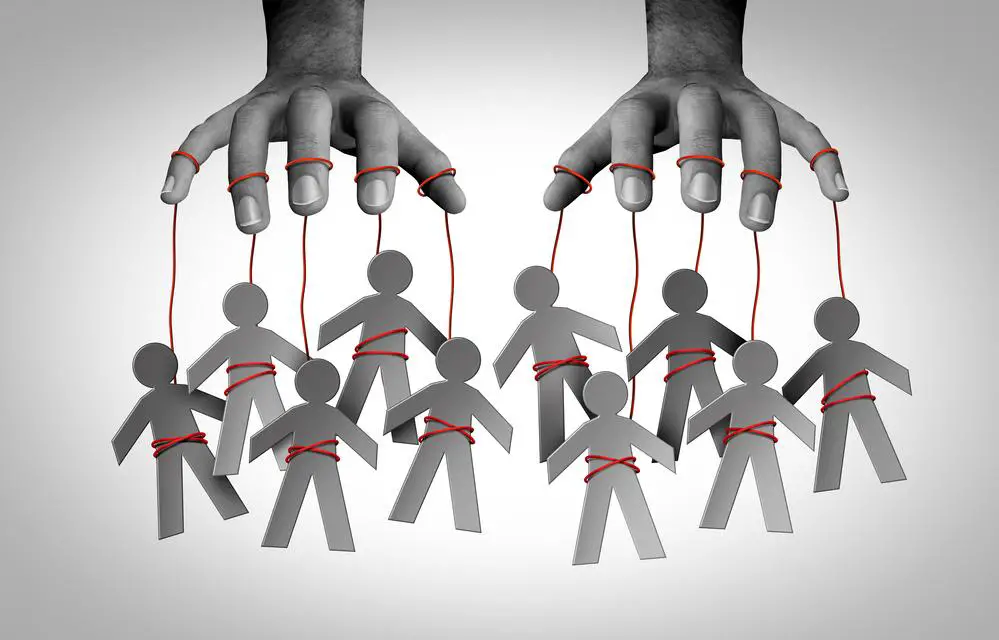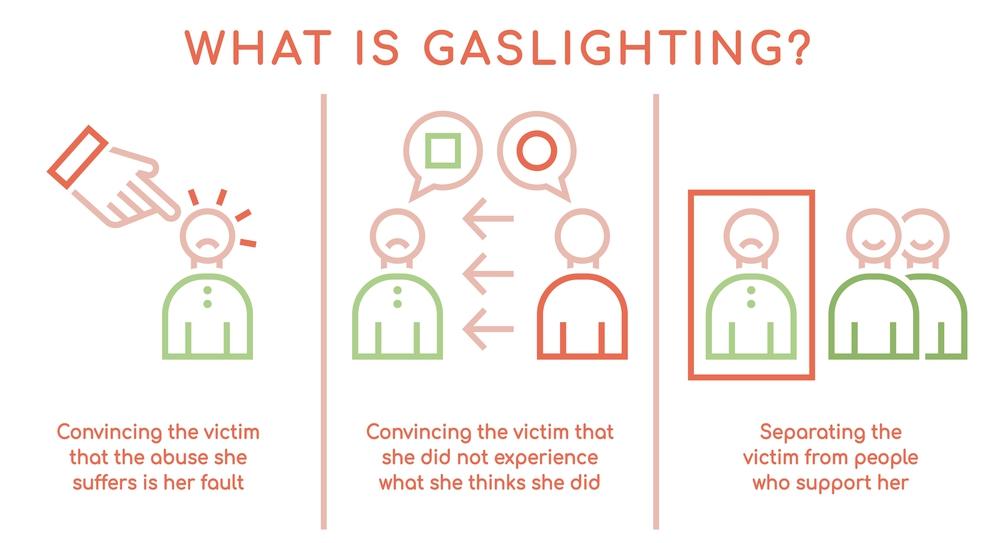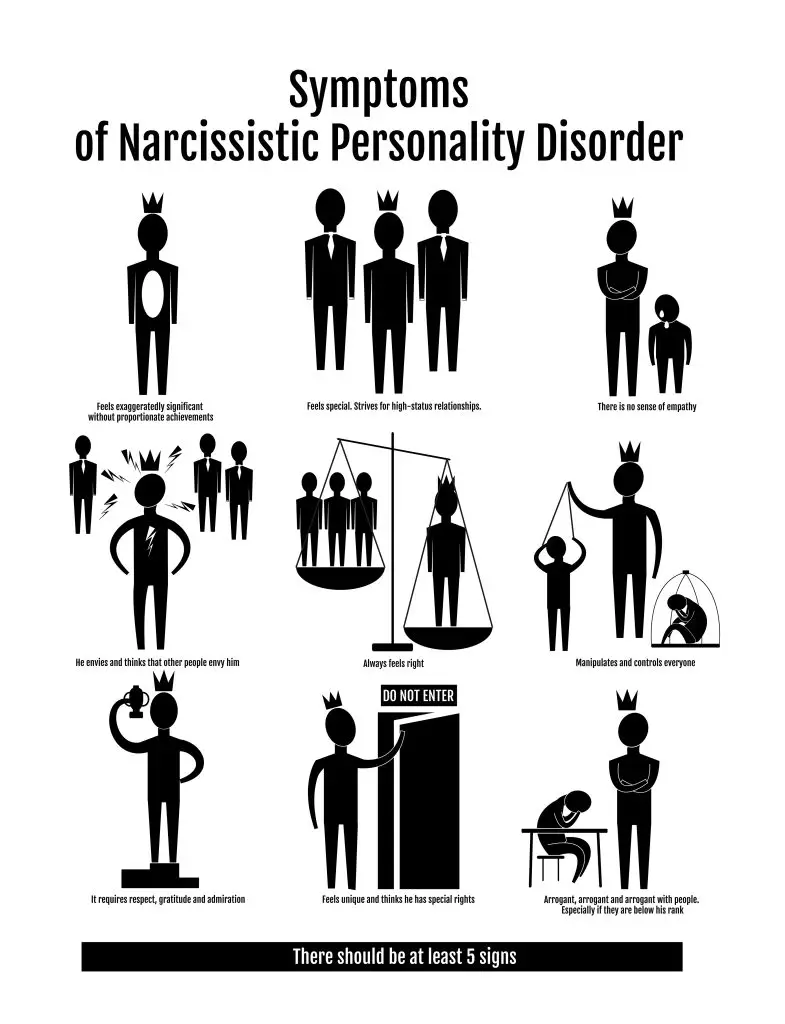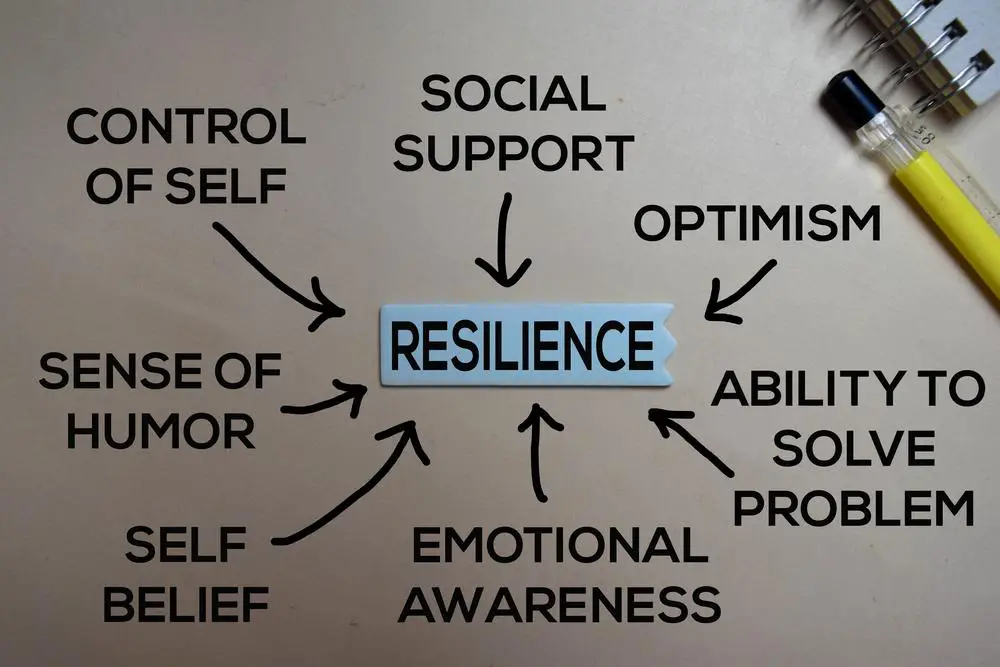As a BetterHelp affiliate, we receive compensation from BetterHelp if you purchase products or services through the links provided
In recent years, the term “DARVO” has become increasingly prevalent in conversations about psychological manipulation and abusive relationships. DARVO stands for “Deny, Attack, and Reverse Victim and Offender,” a behavior often exhibited by narcissists when confronted with accusations of wrongdoing. Understanding this concept is crucial for recognizing and addressing the complex dynamics at play when dealing with individuals who may have narcissistic tendencies.
DARVO is a response pattern that a narcissist may use when they feel threatened or criticized. It involves denying the behavior, attacking the individual making the claim, and then reversing the roles to paint themselves as the victim and the accuser as the offender. This confusing tactic can leave victims feeling disoriented and doubting their perceptions. Your mental health and well-being need to recognize when DARVO is being used so you can take steps to protect yourself and seek appropriate support.
Navigating relationships with those exhibiting narcissistic behaviors can be challenging. Narcissists excel at using various control tactics to dominate their relationships and manipulate the narrative to their advantage. By denying their harmful actions and blaming others, they avoid accountability and perpetuate a cycle of abuse. Awareness of these patterns can be the first step in breaking free from the manipulation and moving toward healing and recovery.
Key Takeaways
- DARVO is a manipulation tactic used by narcissists to evade accountability.
- Recognizing DARVO patterns can help individuals protect their mental health.
- Awareness and understanding are vital for healing from narcissistic abuse.
Understanding DARVO

DARVO is a behavior often exhibited by individuals seeking to deflect blame. You must understand its mechanics and the psychological manipulation it entails.
Origins and Definition
DARVO stands for Deny, Attack, and Reverse Victim and Offender. Dr. Jennifer Freyd identified it at the University of Oregon in the 1990s. This response pattern is commonly used by perpetrators of wrongdoing, especially in the context of narcissistic behavior.
- Deny: The accused party outright denies the behavior.
- Attack: The accused becomes aggressive, turning the tables on the accuser.
- Reverse Victim and Offender: The accused claims they are the actual victim, thus reversing the roles.
Key Takeaway: Recognizing DARVO is your first step in dealing with manipulative individuals. It’s a tactic used to obscure the truth and exert control.
Dynamics of DARVO
The process of DARVO unfolds in a calculated manner:
- Control: The accused aims to maintain a grip on the narrative by denying wrongdoing.
- Manipulation: The attack phase adds an emotional spin, disorienting the accuser.
- Reverse: In the final twist, the accused shifts the blame, portraying themselves as victims.
Awareness of the dynamics at play can help you respond effectively with this concerning behavior.
Key Takeaway: If you find yourself in a situation where the conversation is spinning out of control, remember the signs of DARVO. It’s not just about reversing roles; it’s about exercising power through psychological manipulation.
Characteristics of Narcissists
 Understanding narcissists and their behaviors is essential for maintaining your emotional health. Let’s break down their traits and patterns.
Understanding narcissists and their behaviors is essential for maintaining your emotional health. Let’s break down their traits and patterns.
Narcissistic Personality Disorder
Narcissistic Personality Disorder (NPD) is a mental condition characterized by:
- A pervasive pattern of grandiosity.
- A constant need for admiration.
- A lack of empathy for others.
Individuals with NPD often maintain an inflated self-image and may react negatively to criticism. Here’s what to keep an eye on:
- Sense of entitlement: They expect favorable treatment as their due.
- Exploitive behaviors: Using others to achieve their ends.
Behavioral Patterns of Narcissists
Narcissists may display various behaviors that can be confusing and challenging. Consider the following:
- Charm and charisma: Narcissists can initially be highly charming and charismatic, drawing you in with their allure.
- Manipulative tactics: They can use flattery or deceit to influence and control others.
Communication with narcissists often includes:
- Gaslighting: Making you question your thoughts and memories.
- Triangulation: Pitting people against one another to maintain control.
Key Takeaway: If you’re dealing with a narcissist, it’s essential to set clear boundaries and protect your self-worth. Remember, their actions are not a reflection of your value.
Mechanisms of Abuse
In the context of a relationship with a narcissist, it’s essential to understand that abuse can manifest in various insidious forms. These mechanisms often aim to undermine your sense of reality and self-worth.
Gaslighting
 Gaslighting is a manipulative tactic where your experience is twisted or spun, with the abuser denying or invalidating your memory of events. Common gaslighting phrases might include, “You’re too sensitive,” or “That never happened.”
Gaslighting is a manipulative tactic where your experience is twisted or spun, with the abuser denying or invalidating your memory of events. Common gaslighting phrases might include, “You’re too sensitive,” or “That never happened.”
- Signs of Gaslighting:
- Frequent second-guessing of your recollection
- Constantly questioning your thoughts and feelings
- Impact of Gaslighting:
- Erosion of your confidence
- Growing distrust in your own judgment
Key Takeaway: Trust your gut; it’s worth looking closer if something feels off.
Emotional and Psychological Effects
The emotional and psychological effects of abusive behavior can be traumatizing. Narcissistic abuse often involves a pattern of devaluation and invalidation directed at you.
- Emotional Outcomes:
- Feelings of worthlessness
- Heightened anxiety and depression
- Psychological Consequences:
- Difficulty trusting others
- Potential development of PTSD
Key Takeaway: It’s essential to prioritize your mental health and seek support if experiencing these effects.
Identifying DARVO in Relationships
Recognizing DARVO—a behavioral pattern involving Deny, Attack, and Reverse Victim and Offender roles—can be crucial in personal relationships. It’s a manipulation strategy where the perpetrator flips the script to evade accountability.
Perpetrator and Victim Dynamics
The dynamics between the perpetrator and victim are complex when DARVO takes place:
- The perpetrator denies any wrongdoing, often with confidence and assertiveness.
- The victim is accused of false allegations, shifting the focus from the original issue.
- This role reversal can confuse the victim and doubt their own perception.
Key takeaway: If you’re feeling groundless accusations coming your way, it could be a sign that DARVO is at play.
Manifestations of DARVO in Personal Relationships
DARVO can manifest in your relationships through various patterns:
- Denial: The offender may outright refuse the existence of the abusive behavior.
Examples:
- “I never said that.”
- “You’re imagining things.”
- Attack: The accused shifts to offense, targeting the victim.
Strategy:
- Stay calm.
- Document the incidents.
- Reverse Victim and Offender: The true offender acts as if they are the harmed party.
Bullet Points:
- Claims of being unfairly treated when confronted.
- Casting oneself as misunderstood or subject to unfair criticism.
Remember: Maintain your perspective despite emotionally charged situations; this helps keep reality in check.
The Impact of Denial and Blame
 When someone employs denial, or places blame, it can have profound effects on the victim’s mental health and their perception of reality and self – a struggle often unseen but intensely felt.
When someone employs denial, or places blame, it can have profound effects on the victim’s mental health and their perception of reality and self – a struggle often unseen but intensely felt.
Effects of Denial on Victims
Key Takeaway: Denial can distort a victim’s perception of events, making it incredibly challenging to hold onto their truth.
- Reality Distortion: When a narcissist denies their actions, it might cause you, the victim, to question the integrity of your memories and experiences. This denial undermines your sense of reality.
- For example: “I didn’t say that!” This common denial can make you doubt whether an event even occurred, even when you remember it clearly.
- Internal Confusion: Persistent denial can lead to confusion within oneself, creating an emotional fog in which accountability is consistently shifted away.
Strategies to Cope with Denial:
- Trust your memory and experiences by journaling and documenting incidents.
- Seek support from trusted friends or professionals who can affirm your reality.
Blame and Self-Blame Dynamics
Key Takeaway: Recognize when blame is being shifted onto you and resist internalizing it as self-blame.
- Unjust Blame: Narcissists often blame victims for their actions or feelings, which can cause you to feel unjustly responsible for situations beyond your control.
- Expression in Action: “You made me angry,” when in fact, their reaction is theirs to own, not yours.
- Self-Blame Cycle: If you frequently encounter blame, you might begin to blame yourself, even in situations where you clearly hold no fault. This internalization can be damaging to your self-esteem.
- Breaking the Cycle: You need to challenge self-blame and embrace self-compassion. Affirmations and therapy can be powerful tools in this journey.
Tips to Overcome Self-Blame:
- Recognize patterns of blame and reflect on them.
- Speak to yourself kindly; remind yourself that you are not at fault.
- Consider therapy to work through feelings of self-blame and rebuild your self-worth.
Remember, while denial and blame can cause you to doubt yourself, standing firm in your truth is a courageous and vital act. Empowering yourself involves recognizing these tactics and seeking support to understand your reality clearly.
Narcissists and Control Tactics
 Narcissists often employ a variety of control tactics to maintain dominance in their relationships. This can lead to a dynamic where you may feel a significant loss of power and autonomy.
Narcissists often employ a variety of control tactics to maintain dominance in their relationships. This can lead to a dynamic where you may feel a significant loss of power and autonomy.
Control and Power Dynamics
Within relationships, narcissists strive to position themselves in a place of unchallenged authority.
- Establishing Dominance: Through charm and coercion, they assert their dominance early on, setting a precedent for the power structure within the relationship.
- Inducing Powerlessness: They often create a sense of powerlessness in others, frequently shifting the balance of control firmly in their favor.
Key Takeaway: Be aware of subtle changes in your relationship dynamics, especially those that leave you feeling sidelined or powerless.
Manipulation Strategies
Narcissists use an array of manipulation strategies to stay in control and avoid taking responsibility for their actions.
- Gaslighting: This is a tactic that makes you doubt your own reality and memories, effectively questioning your sanity.
- Projection: Narcissists deflect blame by attributing their negative traits or behaviors to others.
- Control the Narrative: They skillfully twist conversations to their advantage to keep the upper hand in the narrative, often leaving you questioning your perspective or sense of responsibility.
Key Takeaway: Trust your instincts and remember that manipulation often starts in small, almost imperceptible ways. Recognize these tactics to protect your narrative and well-being.
Healing and Recovery
Embarking on the journey of healing and recovery can be transformative for survivors of narcissistic abuse. It’s a time to rebuild emotional health and regain a sense of self. Remember, you’re not alone; with the right resources and support, it’s possible to move forward.
Therapy and Mental Health Support
 Seeking help from a mental health professional is a crucial step toward recovery. Therapy provides you with a safe space to process your experiences and address issues like anxiety and depression. Consider these options:
Seeking help from a mental health professional is a crucial step toward recovery. Therapy provides you with a safe space to process your experiences and address issues like anxiety and depression. Consider these options:
- Individual Therapy: One-on-one sessions with a therapist can help you navigate personal challenges and develop coping strategies.
- Group Therapy: Sharing your experiences with others who understand can validate your feelings and foster community.
- Support Groups: Whether online or in-person, connecting with others with similar experiences can be incredibly healing.
The key takeaway: Therapy and support groups can be a lighthouse, guiding you through the stormy seas of recovery.
Building Resilience and Resources
 Recovering from narcissistic abuse involves more than healing old wounds; it’s also about strengthening your emotional resilience. Here are strategies to help you regain control:
Recovering from narcissistic abuse involves more than healing old wounds; it’s also about strengthening your emotional resilience. Here are strategies to help you regain control:
- Self-Care: Focus on activities that restore your well-being, like exercise, meditation, or hobbies.
- Setting Boundaries: Learn to say no and establish limits to protect your emotional health.
- Educational Materials: Read books or access online resources to understand better narcissistic behaviors and how to cope with them.
- Developing a Support System: Surround yourself with friends, family, or a therapist who can provide empathy and understanding.
Key takeaway: Cultivating resilience through self-care and education empowers you to stand firm in adversity.
Legal and Societal Perspectives
When navigating the complex landscape of DARVO responses, it’s crucial to understand how these dynamics play out in legal settings and how society perceives both the accuser and the accused.
DARVO in Legal Settings
In the context of legal proceedings, particularly those involving sexual assault, the DARVO tactic can deeply impact the outcomes. Here’s a snapshot:
- Defense Strategy: Perpetrators may use DARVO as a defense strategy, attempting to shift the blame onto the victim.
- Impact on Victims: This can exacerbate the trauma for the individual experiencing narcissistic abuse syndrome, making them less likely to be believed.
- Police Perception: Law enforcement may struggle to discern the truth, often influenced by the conviction with which the accused conducts character assassination.
Victims may find themselves on the defensive, having to establish credibility in the face of victim-blaming. In this tug-of-war for truth, your understanding of these tactics can be a lifeline to those affected.
Media Representation and Public Perception
The interplay between media representation and public perception is intricate. Consider this:
- Media Narratives: Often, media can unwittingly perpetuate DARVO by prioritizing sensational stories over the nuanced reality of abuse.
- Influence on Society: These narratives heavily inform public perception, leading to a culture that may inadvertently endorse victim-blaming.
- Awareness Campaigns: Awareness of these dynamics is budding, with some media outlets working to shift the narrative towards a more empathetic understanding of narcissistic abuse syndrome.
As these stories unfold, remember that empathy is key to supporting victims and fostering a society that values truth and justice over sensationalism.
Prevention and Education
Empowering you to spot and counteract manipulative behaviors is fundamental to maintaining emotional health.
Promoting Healthy Relationships
Healthy relationships are built on mutual respect, trust, and open communication. Here’s how you can foster such relationships:
- Educate Yourself and Others: Knowledge is power. Learn about the characteristics of healthy vs. unhealthy relationships to better navigate your connections.
- Open Dialogues: Encourage conversations about emotional health and the impact of manipulation in relationships.
- Setting Boundaries: It’s essential to set and respect personal boundaries. This helps prevent overstepping and fosters a sense of mutual respect.
- Model Behavior: Be a role model of positive behavior in your relationships. Others will often mirror this conduct.
Key Takeaway: Equip yourself with knowledge and model the behaviors of a healthy relationship—you’ll be less likely to fall prey to manipulation.
Raising Awareness and Credibility
Boosting awareness and establishing credibility is vital to combat the DARVO (Deny, Attack, and Reverse Victim and Offender) tactics used by narcissists:
- Betrayal Trauma Theory: Educate yourself on this theory to understand the psychological impact of betrayal by a trusted individual.
- Communication Channels: Utilize various platforms like social media, workshops, and community groups to spread awareness.
- Support Systems: Solidify your support system and recognize the importance of credible sources when discussing manipulative tactics.
- Credible Information: Share accurate and researched information to debunk myths surrounding narcissistic behaviors and DARVO.
Key Takeaway: Raise awareness and spread credible information to help yourself and others identify and stand up against narcissistic abuses.
Survivor Stories and Advocacy
Empowering survivor stories and passionate advocacy are vital in understanding the impact of DARVO on victims, providing insights into betrayal trauma and post-traumatic stress disorder.
Survivor Narratives
- Connection Through Stories: Reading detailed accounts from individuals who’ve endured psychological manipulation can provide you with a sense of camaraderie. These narratives often spotlight the complex journey from victimization to resilience.
- A Voyage to Healing: Survivor stories give you a raw look into the hardships faced, including betrayal trauma and its subsequent healing process. Through their words, you may find strategies to navigate your path to recovery.
Advocating for Change
- Raising Voices for Awareness: Survivors are turning their pain into platforms for change by advocating for a greater understanding of narcissistic abuse and its long-term effects, such as PTSD.
- Community Support: Advocacy groups offer a vital space to share experiences, promote healing, and press for policy changes to support survivors.
- Key Takeaway: Your story deserves to be heard, and transforming personal struggle into advocacy not only aids your recovery but can also help others on a similar journey.
Frequently Asked Questions
Navigating relationships with narcissists can be challenging, mainly when they employ manipulative strategies. This section addresses your pressing queries about the DARVO technique often used by narcissists. You must recognize these behaviors and understand how to respond to them effectively.
What is the DARVO technique commonly used by narcissists?
DARVO stands for Deny, Attack, and Reverse Victim and Offender. Narcissists use a defensive strategy when they’re accused of wrongdoing. Instead of acknowledging their faults, they deny the behavior, attack the accuser, and flip the situation so that they appear to be the victim. This can leave you feeling disoriented and doubting your own experiences.
Key takeaway: Stay grounded in your reality—trust your experiences and feelings.
What are some common traits of a narcissist who utilizes DARVO?
A narcissist employing DARVO may exhibit traits like a lack of empathy, a need for admiration, and a penchant for exploiting relationships. They often reject criticism and react with contempt or aggression when their flaws are pointed out. Their skill in shifting blame can make confrontations incredibly disarming.
Key takeaway: Be aware of the common traits, and don’t be swayed by their blame-shifting tactics.
How should one respond effectively to someone displaying DARVO behavior?
Responding to DARVO can be tricky, but keeping calm and sticking to facts can help. Set clear boundaries, and don’t get pulled into an argument. It’s also beneficial to seek support from friends, family, or a therapist to maintain perspective.
Key takeaway: Respond with calm and clarity, and don’t hesitate to reach out for support.
Can DARVO be considered a form of emotional abuse?
Yes, DARVO can be a form of emotional abuse as it undermines and devalues the victim’s feelings and experiences. It can lead to confusion and self-doubt, which harm one’s emotional well-being.
Key takeaway: Recognize DARVO as emotional abuse and consider seeking professional help to cope with its effects.
How might a covert narcissist react when confronted?
A covert narcissist might react to confrontation by playing the victim or with passive-aggressive behavior. They might use subtle DARVO tactics, appear hurt or misunderstood, or withdraw affection to manipulate you.
Key takeaway: Expect subtle manipulation and prioritize your emotional health when dealing with a covert narcissist.
In what ways does DARVO relate to gaslighting?
DARVO and gaslighting are related as both involve manipulation that can distort your perception of reality. While gaslighting aims explicitly to make victims doubt their memory and sanity, DARVO involves a broader strategy of evasion, attack, and flipping the narrative.
Key takeaway: Keep a clear mind and trust yourself when faced with these manipulation tactics.
- Breaking the Silence: Why Men’s Mental Health Matters More Than Ever - April 15, 2025
- How to Transform a Home’s Patio Space into a Relaxing Space - March 23, 2025
- 5 Strategies to Use a Cell Phone to Help Manage Your Stress - March 23, 2025
This site contains affiliate links to products. We will receive a commission for purchases made through these links.



